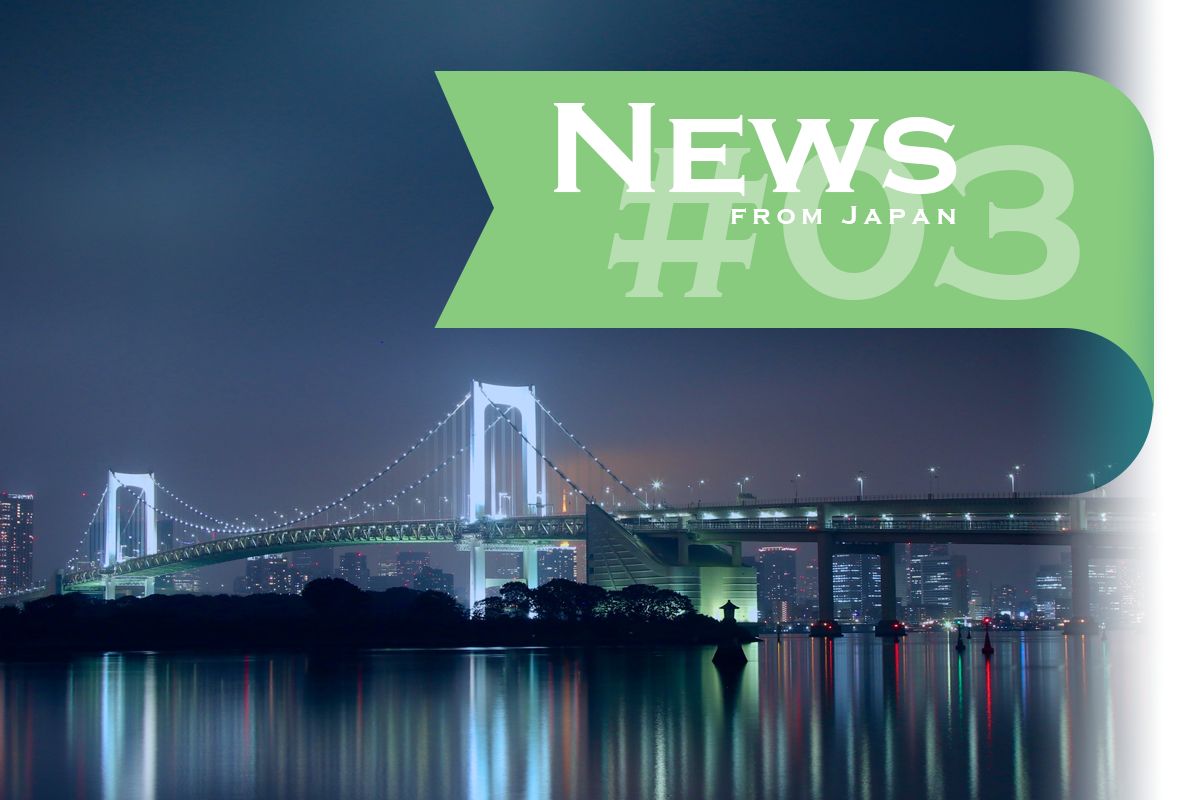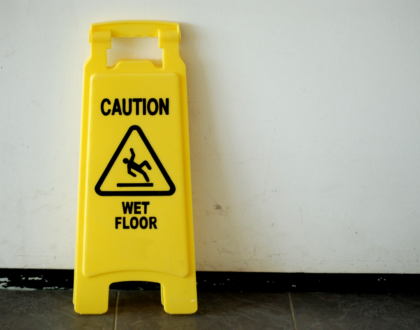News from Japan #03

by Florian
As the number of new infections decreases, businesses reopen and Japan tries to enter a “new state of normality”. We looked at the recent unfolding of events, with a focus on Tokyo.
コンテンツ
Life in Tokyo – Back to normal?
Source: NHK (June 1st, 2020)
With regulations being ramped down, Japan slowly seems to be returning to everyday life. The state of emergency was finally lifted for Tokyo on May 25th. On June 1st, the capital officially entered step 2 of its plan for gradually relaxing coronavirus-related restrictions imposed on citizens and businesses.
The relaxations started with step 1 last week. Museums, libraries, and schools were allowed to re-open. Now, businesses like private tutoring schools (including Eikaiwa), theaters and cinemas, department stores, and sports gyms have also been given the “go” sign.
In the next step, karaoke boxes, pachinko parlors, amusement parks, etc. will be officially allowed to re-open as well. Whether that happens will depend on the number of new infections. Tokyo’s government said that it will gradually continue its relaxation policy in two-week intervals.
Of course, these aren’t strict orders, but only “strong requests” (要請, ようせい). Businesses that decide to go against the plan can’t be directly punished. Some places, like the Tobu department store in Ikebukuro, already decided to reopen last week. However, many businesses seem to follow the government’s guidelines.
The basic assumption underlying all of this is that people will respect the ongoing situation and create a “new lifestyle” (新しい生活様式, あたらしいせいかつようしき) where everyone is conscious about social distancing, hand washing and wearing masks.
Reaction from companies
Source: IT Media Executive, Newsweek Japan (both March 26th 2020)
When the emergency state was first lifted, many companies were still somewhat reluctant about going back to normal. Many of those that had introduced working from home decided to at least extend their “emergency measures” until the end of March. Companies like Honda, Sony, and Dentsu decided to gradually increase the percentage of employees in their offices starting in June.
Others, like Hitachi, Bridgestone, and stock image provider Pixta, were more careful, extending their existing “work from home” policies indefinitely – for the foreseeable future.
There are also companies (mostly smaller ones and startups) that have used this opportunity to convert to a completely new working style. For example, audiobook producer Otobank and IT consultant BRAIN WAVE announced a permanent shift to telework.
After being forced to try it out once, many companies have noticed that in many cases, work can be done just as efficiently – or in some cases, even more efficiently – without having every single employee commute every day. Here’s to hope that this will remain as a positive after-effect of the pandemic.
Commuter numbers rise again
Even then, many employees were asked to return to their office desks. One area where this clearly showed was the public transportation system. Commuter density was almost back to normal on June 1st.
In the early hours of the morning, the hashtag “packed train” (#満員電車, まんいんでんしゃ) was trending, with users pointing out the contradictions between the government-proclaimed “new lifestyle” and the reality of the situation:
飲食店とか3密避けろって言われてスペースとか空けてるのに電車は換気だけしてればオッケーな感じで政治家とかテレビで何も言わないみたいなのはどうなんだろ…今日の通勤電車とか見てると絶対に感染者増えるだろうなと思うわ…まぁ、実際に対策のしようがないのも事実なんだけどね…#満員電車
— チキン担当 (@qRVoOiRKlO9x2bw) May 31, 2020
飲食店とか3密避けろって言われてスペースとか空けてるのに電車は換気だけしてればオッケーな感じで政治家とかテレビで何も言わないみたいなのはどうなんだろう… 今日の通勤電車とか見てると絶対に感染者増えるだろうなと思うわ…まぁ、実際に対策のしようがないのも事実なんだけどね…
In restaurants, we’re asked to avoid the “three Cs” and leave space open, but apparently trains are fine as long as they open the windows. I don’t know how to feel about politicians and TV stations saying nothing about this. With the trains looking like they look today, I think the number of new infections is definitely going to rise… But I guess it’s also true that you can’t control it…
A second wave?
Source: Asahi Shinbun/Yahoo News (June 2nd 2020)
It looks like the situation (at least in Tokyo) is far from over. On June 2nd, there were 34 new infections in the capital – numbers in this range were last reported around May 14th. Online, this has drawn criticism from commenters. But people also understand that this may just be what society will have to deal with for a while.
Withコロナと経済優先は理解できるけど、緊急事態宣言解除もそうだし
Step2への移行も決断が早すぎる
このままでは2週間後にどうなっているのか容易に想像がつく
今日の夕方にもアラートを出すべき
締める時は速く、緩めるときは時間を掛けないと
I can understand the “With Corona” mindset and prioritizing the economy, but both the lifting of the state of emergency and the shift to step 2 came way too early.
With things being like they are right now, you can easily imagine what it’s going to look like in two weeks.
They should send out the “Tokyo Alert” this evening.
We have to be quick to regulate and patient about relaxing [the regulations].
The “Tokyo Alert” that is mentioned here was indeed sent out that evening – the Rainbow Bridge in Tokyo’s Minato ward (as well as some other landmarks) were lit up in red. This is just a general warning sign issued by the metropolitan government to the residents of the Tokyo area. Aside from the light-ups, there are no other direct consequences. The state of emergency is expected to be (re-)proclaimed if new infections rise to a “5 per 100,000 people” level (on June 2nd, the rate was about 0.8 per 100,000).
Keidanren plans to support job seekers
Source: Keidanren (March 29th 2020)
Meanwhile, many new university graduates in Japan still have trouble finding their first job. On June 1st, the job platform MyNavi caused some discontent on social media by announcing support for next year’s graduates (because those students can now start to apply for summer internships on the platform). Understandably, many were irritated, asking where the support for this year’s graduates suddenly went.
On the other hand, the Japan Business Federation (Keidanren) has been talking with universities and announced on May 29th that it will organize and hold additional job fair events in summer and autumn this year to make up for all the canceled ones in March and April. It also announced that its members will continue to give job seekers additional chances. The quote below is from the official statement on the federation’s website – a classic example of a formal text with long, run-on sentences.
企業は、弾力的な採用選考活動を実施し、自社の採用選考活動に関する情報の開示に努めます。また、年間を通じて、複数回の採用選考の機会を確保するよう最大限努めるとともに、地方の学生が都会の学生に比べて不利とならないよう配慮します。
The businesses [members of Keidanren], will carry out their recruitment activities flexibly and make efforts to stay transparent while doing so. Furthermore, they will also make sure that students from rural areas will not be put at a disadvantage when compared to students from the cities. They will put their best efforts into securing multiple recruitment opportunities throughout the year.
Vocabulary
| Japanese | Kana | English |
|---|---|---|
| 緩和 | かんわ | easing, relaxation (of restrictions etc.) |
| 慎重(に) | しんちょう(に) | carefully, cautiously |
| 下回る | したまわる | be less than, to be lower than (a number, value, etc.) |
| 桁 | けた | order of magnitude, size (ex. 100 has one 桁 more than 10) |
| 段階的 | だんかいてき | in steps, gradually |
| 警戒を呼び掛ける | けいかいをよびかける | give out a warning |
| 警鐘を鳴らす | けいしょうをならす | to give out a warning (more figuratively, lit. “to ring the warning bell”) |
| 拡充 | かくじゅう | expansion |
| 支障 | ししょう | problem, obstacle, (ex. 支障が生じる (ししょうがしょうじる) “a problem arises”) |
| 様子見 | ようすみ | wait-and-see, stand by and watch something pan out |
| 生活様式 | せいかつようしき | lifestyle (also ライフスタイル) |
| 稼働 | かどう | running, operation (of a machine) |
| 換気 | かんき | ventilation, letting air into a room |
| 感染者 | かんせんしゃ | infected person |
| 弾力 | だんりょく | flexibility |
| 確保(する) | かくほ | to secure (resources, jobs, etc.) |
| 不利 | ふり | disadvantage, unvaforable position |
Conclusion
The state of emergency may have been lifted, but it’s going to be a bumpy ride until things can truly go back to normal. Chances are that especially Tokyo will go through multiple cycles of regulation and relaxation, and businesses will react to whatever guidelines the government lays out.



